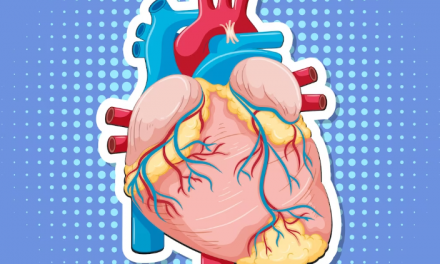Fatty liver disease (also called non alcoholic fatty liver disease, or NAFLD) is an extremely common condition, estimated to affect one in three adults worldwide, and 75% of people with obesity. As blogged previously, NAFLD can progress to cause inflammation in the liver (called non alcoholic steatohepatitis or NASH), which drives inflammation and scarring in the liver (called fibrosis).
It takes a substantial amount of weight loss to move the needle on NASH. At least 10% weight loss with lifestyle changes is needed to achieve clinically significant rates of NASH resolution and improvement in fibrosis. As it is exceptionally difficult to lose and maintain this degree of weight loss with lifestyle changes due to our natural human biology that vigorously defends weight (more on this here and here), there is great interest in exploring the effect of specific weight loss treatments to see if they can improve fatty liver disease.
A treatment for NASH should be effective to induce NASH resolution, and ideally, we would also like to see a regression of fibrosis with treatment. However, it is appreciated that it can take a lot of time for fibrosis to improve, longer than many clinical trials allow for. Thus, regulators (in particular the American FDA) requires that at a minimum, a treatment of NASH should at least prevent progression (worsening) of fibrosis, in addition to resolution of NASH.
The recently published BRAVES trial was the first trial to compare the effect of bariatric surgery vs best medical care on NASH. This was a study of 288 Caucasian people in Italy with NASH, BMI 30-55, with or without type 2 diabetes, who were randomly assigned to Roux-en-Y gastric bypass surgery, sleeve gastrectomy, or medical care. Medical care included a dietary and physical activity program, and vitamin E 800 IU/day. All people with type 2 diabetes in the medical care group (comprising 63% of people in this group) were also prescribed pioglitazone and liraglutide 1.8mg daily (surgical groups did not receive these medications nor vitamin E). Liver biopsies were done at baseline and again at 1 year. The primary endpoint was histological (biopsy proven) resolution of NASH without worsening of fibrosis. In the intention to treat analysis, 56% of patients in the gastric bypass group and 57% of people in the sleeve gastrectomy group met the primary endpoint, both superior to 16% in the lifestyle modification group. The more severe the NASH and liver fibrosis, the higher the proportions of patients that experienced NASH resolution. Improvement of at least one stage of fibrosis severity without worsening of NASH was substantially higher in the surgical groups (46-47%) vs that in the control group (28%). It is interesting that the benefit in the two surgical groups was almost identical, despite the fact that there was more weight loss (-31.8%) in the gastric bypass group than the sleeve gastrectomy group (-24%) (vs -5.5% weight loss in the medically managed group). This suggests that there may be little incremental benefit to the liver of weight loss above 20% (as noted in the accompanying editorial), though I feel we need more data to confirm whether this is true.
To date, treatment of NASH with weight loss medication has proven to be a tough nut to crack. We included recommendations for weight management medications that have shown benefit in fatty liver disease (liraglutide and semaglutide) in our Canadian Obesity Clinical Practice Guidelines which we updated in 2022, though the level of evidence is low (disclosure: I am the lead author of this chapter). As noted above, it may take longer than a year (which is the duration of many studies of medications) to see meaningful improvement in fibrosis – though the surgical data above did show powerful improvement at a year. Perhaps fibrosis is faster to respond with larger and faster degrees of weight loss. Perhaps with weight loss medications emerging that approach similar weight loss to that seen in bariatric surgery, we could see meaningful benefits in NASH – time and data will tell.
A major limitation in this field is that regulators (FDA) requires liver biopsies to prove benefit of treatment. Liver biopsies can be painful, are invasive, and not without risk. Understandably, both patients and their doctors may be reluctant to include patients in these trials where multiple liver biopsies are required. The studies are thus small (again, largely due to the need for biopsies) and are thus underpowered to show benefit. There are many ways to assess stage and classify fatty liver disease without biopsy, including calculations based on blood tests, and imaging studies like MRI. If regulators would accept these non invasive modalities to assess NASH, the field could move forward much faster, and with less risk to patients in clinical trials.
BOTTOM LINE: The field of fatty liver disease is ripe for discovery of treatments that can benefit this health condition. Bariatric surgery can be very effective, but access is limited, and it’s not the right treatment for everyone. Hopefully more effective medications will emerge that help not only with weight loss, but with meaningful improvements in NASH.
Disclaimer: I have been an investigator in clinical trials with liraglutide. I receive honoraria as a continuing medical education speaker and consultant from the maker of liraglutide and semaglutide (Novo Nordisk), as well as the makers of other medications currently being explored for treatment of NASH (Eli Lilly, Boehringer Ingelheim).
Subscribe to my blog (upper right) and follow me on twitter @drsuepedersen !
Share this blog post using your favorite social media link below!
www.drsue.ca © 2023












